Abstract
After increasing steadily for 15 years the cesarean section rate in Ontario stabilized at 20.2 per 100 deliveries in the fiscal years 1986-87 and 1987-88. An important factor in the stabilization was a decrease in the rate of repeat section. The diagnosis and management of dystocia and fetal distress continue to put upward pressure on the cesarean section rate, which is higher than would be expected if recent practice guidelines had been fully implemented. There is a need for further research into the appropriate management of labour and delivery and into more targeted techniques for bringing practice into line with appropriate standards of care.
Full text
PDF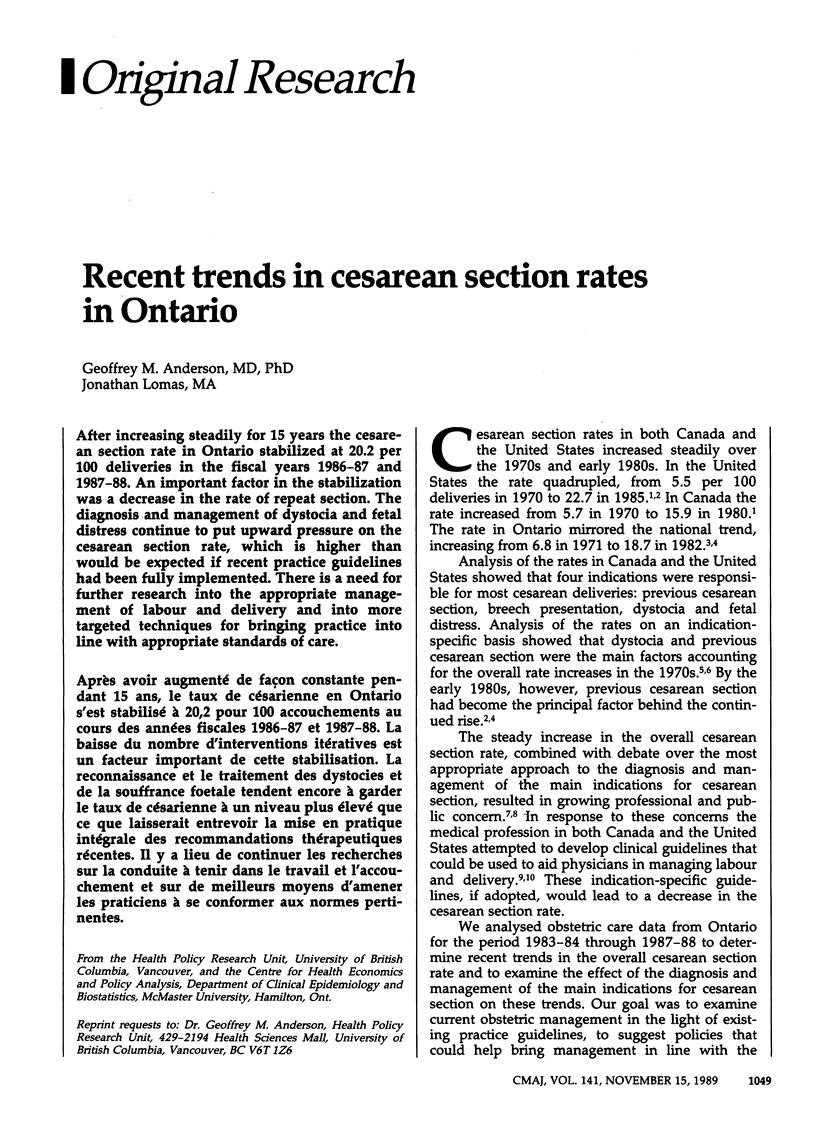
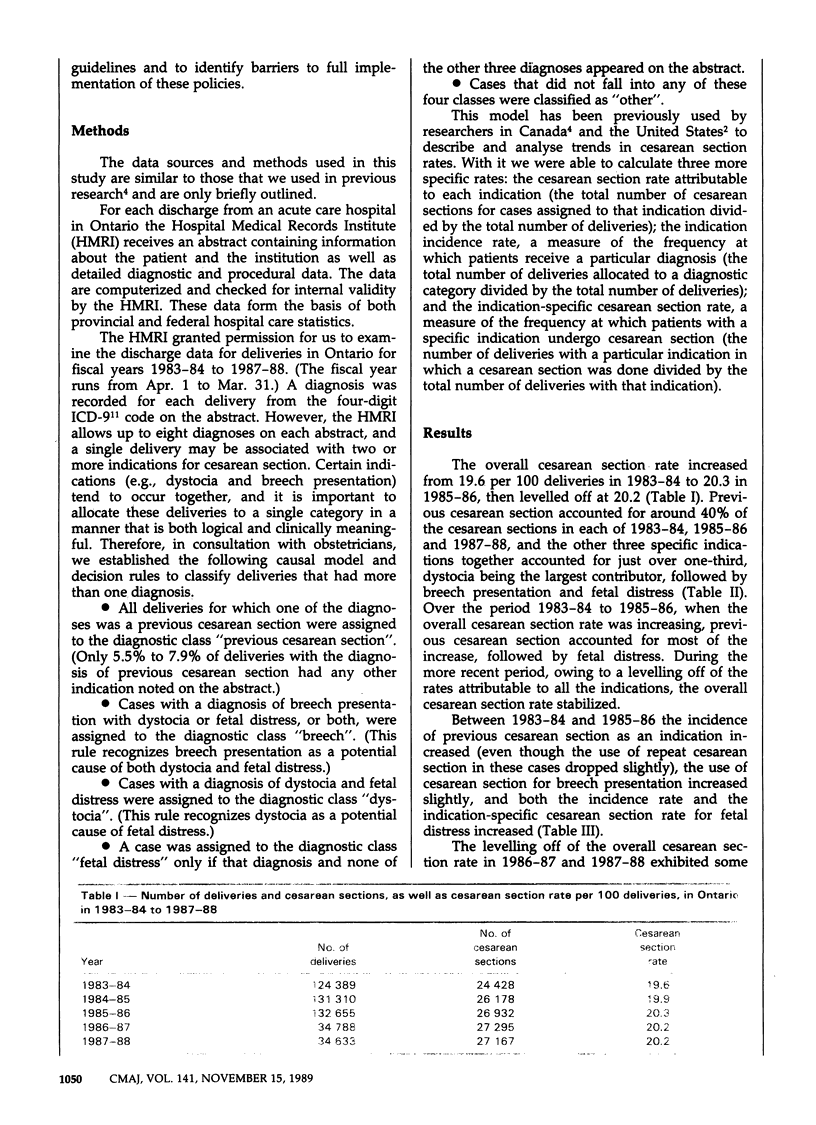
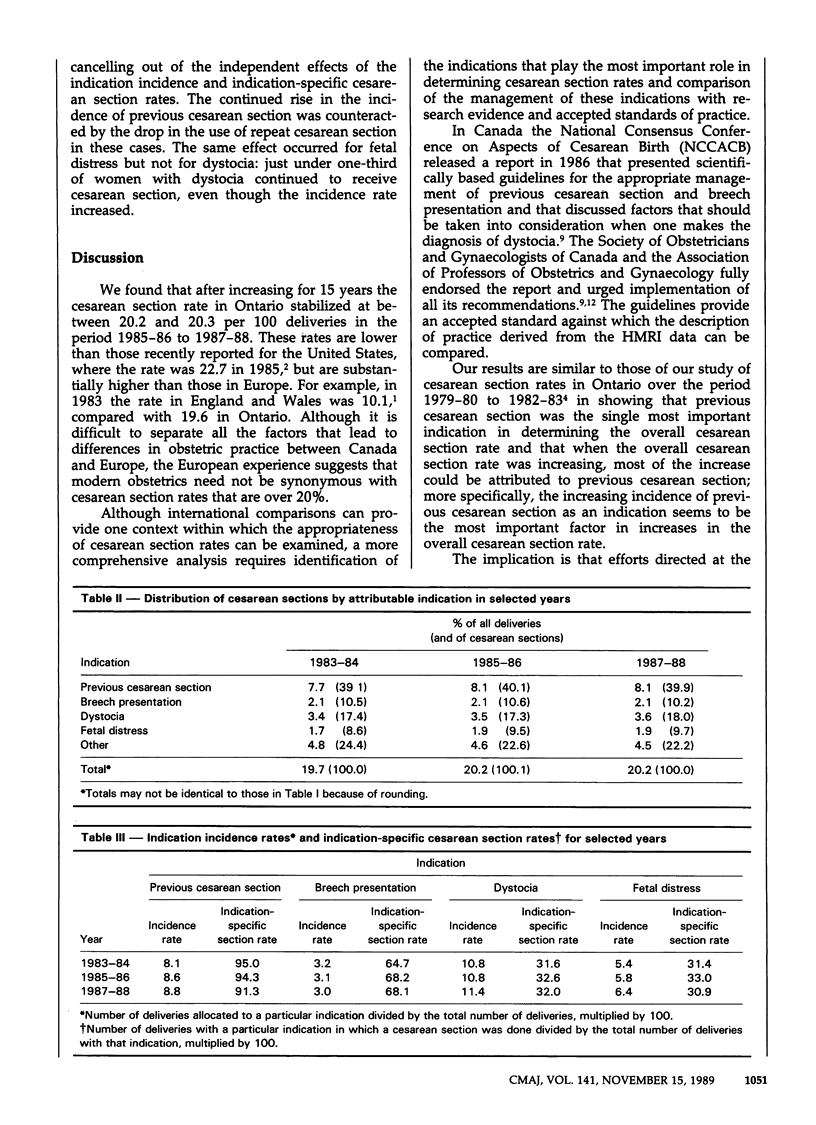
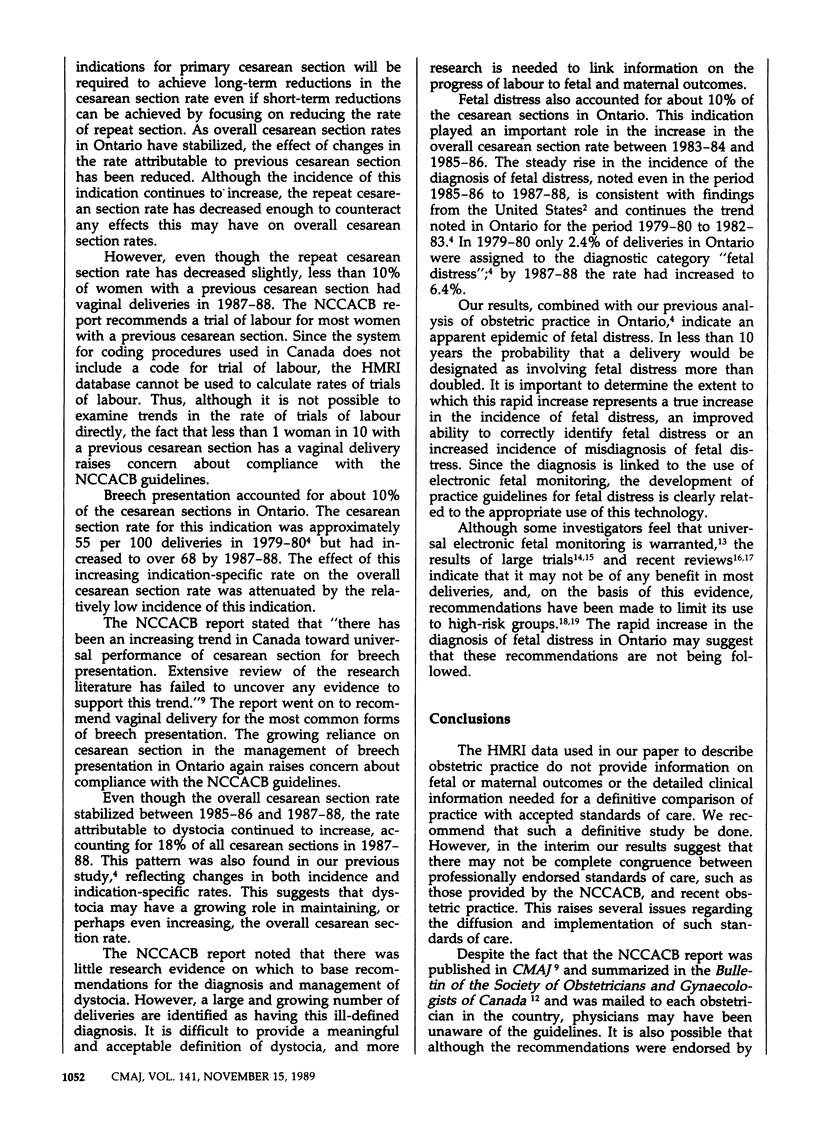
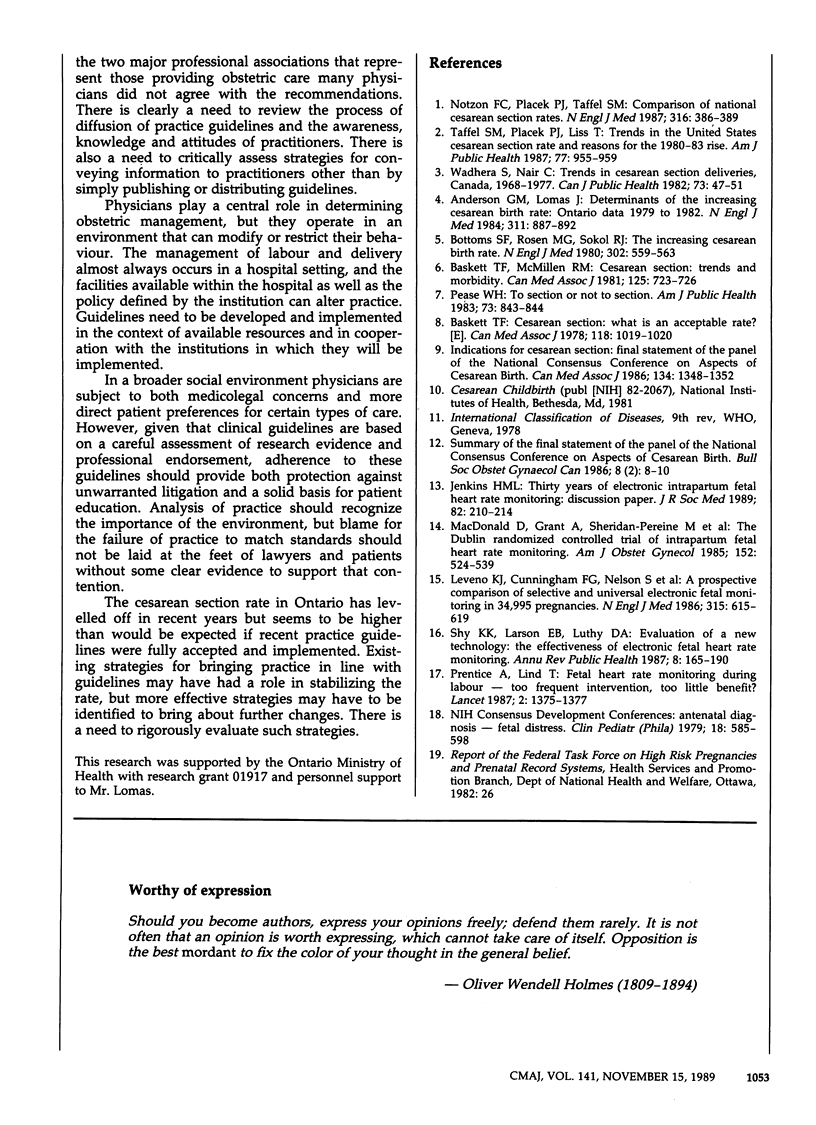
Selected References
These references are in PubMed. This may not be the complete list of references from this article.
- Anderson G. M., Lomas J. Determinants of the increasing cesarean birth rate. Ontario data 1979 to 1982. N Engl J Med. 1984 Oct 4;311(14):887–892. doi: 10.1056/NEJM198410043111405. [DOI] [PubMed] [Google Scholar]
- Baskett T. F. Cesarean section: what is an acceptable rate? Can Med Assoc J. 1978 May 6;118(9):1019–1020. [PMC free article] [PubMed] [Google Scholar]
- Baskett T. F., McMillen R. M. Cesarean section: trends and morbidity. Can Med Assoc J. 1981 Oct 1;125(7):723–726. [PMC free article] [PubMed] [Google Scholar]
- Bottoms S. F., Rosen M. G., Sokol R. J. The increase in the cesarean birth rate. N Engl J Med. 1980 Mar 6;302(10):559–563. doi: 10.1056/NEJM198003063021006. [DOI] [PubMed] [Google Scholar]
- Jenkins H. M. Thirty years of electronic intrapartum fetal heart rate monitoring: discussion paper. J R Soc Med. 1989 Apr;82(4):210–214. doi: 10.1177/014107688908200410. [DOI] [PMC free article] [PubMed] [Google Scholar]
- Leveno K. J., Cunningham F. G., Nelson S., Roark M., Williams M. L., Guzick D., Dowling S., Rosenfeld C. R., Buckley A. A prospective comparison of selective and universal electronic fetal monitoring in 34,995 pregnancies. N Engl J Med. 1986 Sep 4;315(10):615–619. doi: 10.1056/NEJM198609043151004. [DOI] [PubMed] [Google Scholar]
- MacDonald D., Grant A., Sheridan-Pereira M., Boylan P., Chalmers I. The Dublin randomized controlled trial of intrapartum fetal heart rate monitoring. Am J Obstet Gynecol. 1985 Jul 1;152(5):524–539. doi: 10.1016/0002-9378(85)90619-2. [DOI] [PubMed] [Google Scholar]
- Notzon F. C., Placek P. J., Taffel S. M. Comparisons of national cesarean-section rates. N Engl J Med. 1987 Feb 12;316(7):386–389. doi: 10.1056/NEJM198702123160706. [DOI] [PubMed] [Google Scholar]
- Pearse W. H. To section or not to section. Am J Public Health. 1983 Aug;73(8):843–844. doi: 10.2105/ajph.73.8.843. [DOI] [PMC free article] [PubMed] [Google Scholar]
- Prentice A., Lind T. Fetal heart rate monitoring during labour--too frequent intervention, too little benefit? Lancet. 1987 Dec 12;2(8572):1375–1377. doi: 10.1016/s0140-6736(87)91266-9. [DOI] [PubMed] [Google Scholar]
- Shy K. K., Larson E. B., Luthy D. A. Evaluating a new technology: the effectiveness of electronic fetal heart rate monitoring. Annu Rev Public Health. 1987;8:165–190. doi: 10.1146/annurev.pu.08.050187.001121. [DOI] [PubMed] [Google Scholar]
- Taffel S. M., Placek P. J., Liss T. Trends in the United States cesarean section rate and reasons for the 1980-85 rise. Am J Public Health. 1987 Aug;77(8):955–959. doi: 10.2105/ajph.77.8.955. [DOI] [PMC free article] [PubMed] [Google Scholar]
- Wadhera S., Nair C. Trends in cesarean section deliveries, Canada, 1968-1977. Can J Public Health. 1982 Jan-Feb;73(1):47–51. [PubMed] [Google Scholar]


